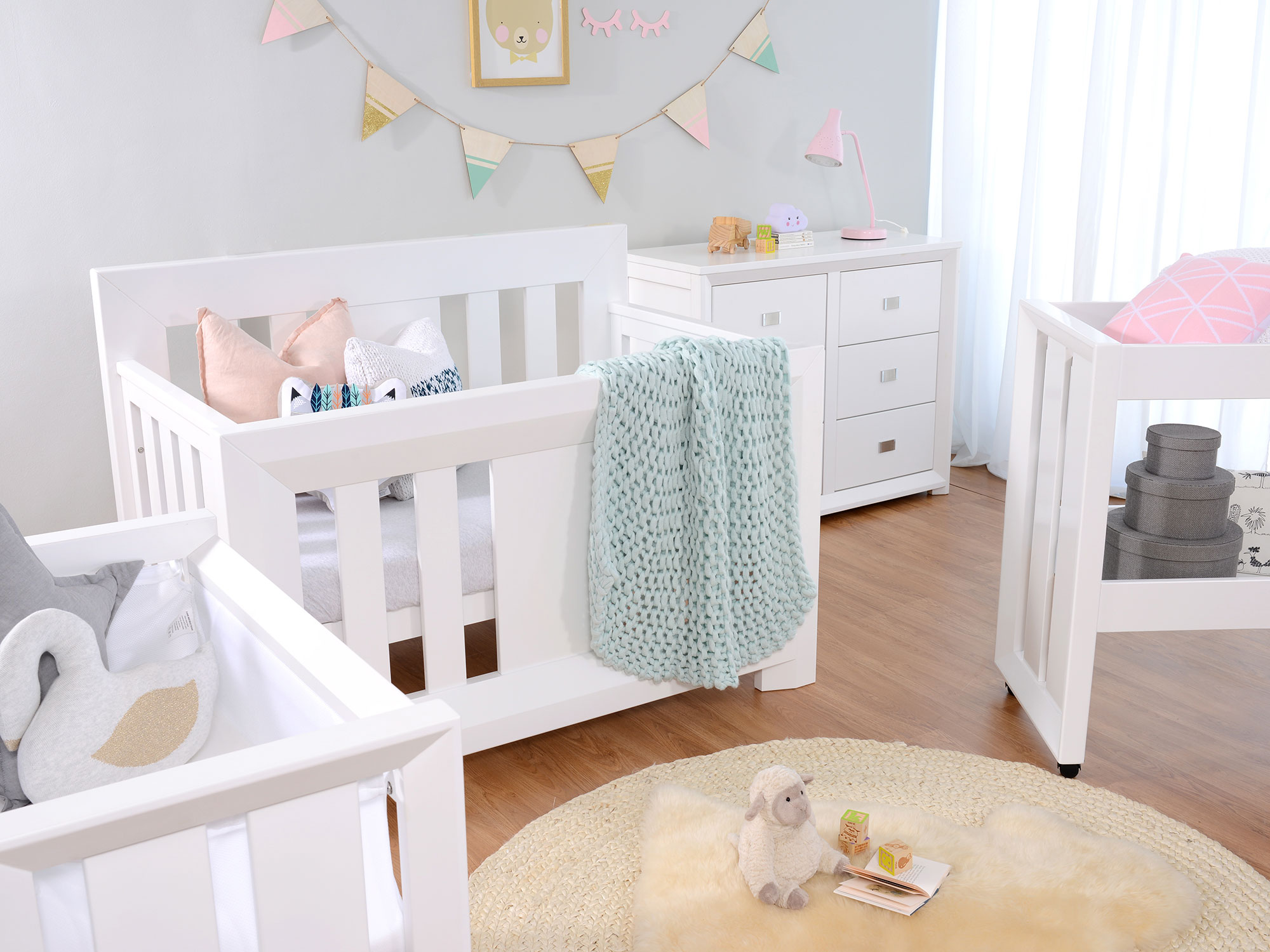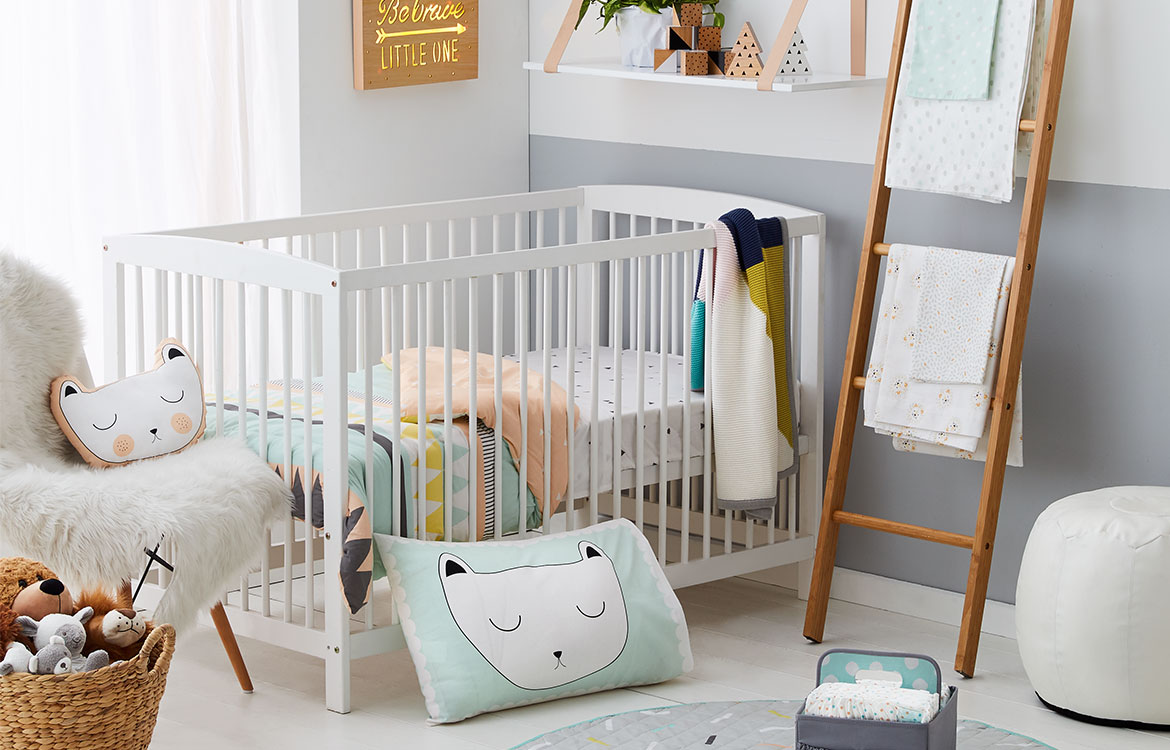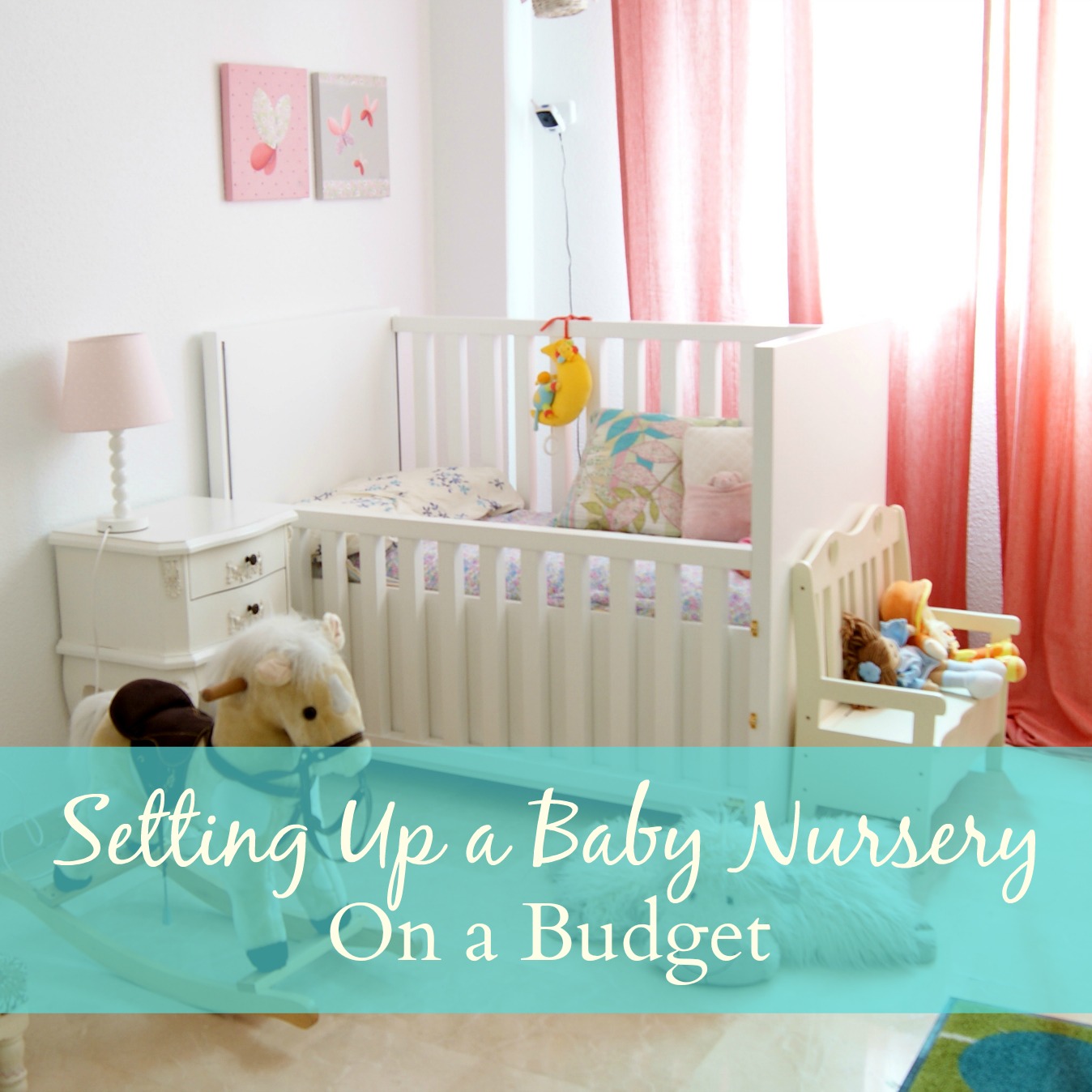Idea For Baby Room

How To Setup a Baby Nursery
Creating a kindergarten can be a daunting task at the same time, but luckily we can help you plan your child’s new home. Here are some tips for setting up a kindergarten.
- Zoom out. Children are small and don’t need full-size crabs to sleep well. A collapsible cot (Think Pack n ‘Play) is an unremarkable option, and there are also some mini crabs that have a mattress that measures approximately 24 “x 38” instead of the standard 27 “x 52” mattress.
- Multitasking. This is obvious, but still worth mentioning as it is one of the best solutions for small spaces: use a dresser as a modified table. Choose an office that reaches your waist and just place the modified pad on top. (If you are concerned about the pad being removed, you can buy separate specialty boxes, rails, or fasteners separately.)) Keep diaper accessories close by but out of sight of the top drawer.
- Be vertical. When you need all of the space in your baby clothes drawer, keep diaper supplies and other essentials in a shoe organizer that hangs flat on the back of a door. Diapers, creams, powders, lotions, nasal aspirators, pacifiers, a thermometer – each item fits in a bag with its own look.
- Share space. Shoe racks that are great for organizing baby clothes that hang on tight rails, whether they fit in a small closet or common parts. Don’t waste precious rod real estate by hanging each little guy on a separate hanger when you can keep a dozen or more decorations vertically in the same spot.
- Keep it fresh. At ET-BT kindergartens, you should move the diaper pile to a different location. Even the best “odor control technology” can impress a small home
- Smart store. If your baby’s nursery is really small, you probably won’t be playing in it too much. Don’t overcrowd the space with things that you don’t use. Only keep nursery for nights and naps (clothes, diaper supplies, blankets, a few bedtime stories), etc., and keep everything else (toys, toy mats, bouncers, bathroom supplies, etc.) in a different room or closet
- Eye trick. Is there a safe place to put a mirror on the wall of your kindergarten (e.g. not over the cot or changing table)? If this is the case, even a small mirror can reflect the light in the room, making the room look bigger and brighter.
- Hide the mess. If you have a lot of drawbacks and tendencies to keep in the nursery, use closed storage to keep an eye on the clutter. The shelves with no doors come with a number of special items, but they look messy on the right side when stacked with a bunch of random things. Using boxes or baskets on open shelves can also solve this problem.
- Edit. You want your child’s kindergarten to be effective, but you want them to be warm, inviting, and beautiful to look at. When it comes to decoration, tweak your design by adding as few pieces as you want instead of just filling the space with things you kinda like. And donate / store / dispose of anything you don’t like.
Tips for Setting Up Your Baby’s Nursery

The main parts of the kindergarten include furniture, bedding and accessories. Of the three, the furniture will be the largest and most expensive piece. First, you should start rationally choosing your furniture, and then build a children’s room around these elements.
How to set the main furniture in the children’s room
The nursery has four main pieces of furniture – a changing cage, table, dresser, and chair. Furniture prices vary and can be influenced by details, finishes, build quality and overall design. The first step in making your selection is determining how long you want to use it. The plan allows you to take into account the design of the kindergarten so that:
- The parts fit easily from a nursery to a baby room.
- The furniture has a simple design that can be easily mixed and matched with new pieces to update the look.
- The furniture is for one child only and new furniture will be bought in a few years.
If you want to have more babies, there is a desire to reuse kindergarten furniture for several years. However, if you don’t think about the short lifespan of baby-fed furniture, there are many more options.
Changeable crumbs easily adapt to the growing child. Depending on the design, these cots can be converted into cots, beds and / or double beds and will be used for the next few years. Some processing tables similarly transform into dressers or other storage units. You will expand the uses of nursery furniture by choosing simple designs that can be combined with new pieces.
Select furniture locations
Choosing a pitcher is not just about which model you choose, you also keep its position in space. It goes without saying that you have to set up your kindergarten according to the strict philosophy of Feng Shui. Room design should be about safety, efficiency, comfort and sleep.
Make sure you place the crab in a part of the room away from the windows and avoid the walls outdoors if possible. Exterior walls in certain climates and houses can be empty and cold. Also think about how light gets into the room at different times of the day.
When the sun comes up in the morning, you don’t want it to burn right over your baby. Evening light from street lights can also affect a baby’s sleep. The thoughtful placement of the caliber can help them get a few minutes of extra sleep
Create storage

Don’t reduce the space you need. Children may be small, but baby items take up enough space. When looking at excavators and shelving there are a number of totlet signs to determine if the parts are of the quality to last for a few years.
Dowel drawn drawer joints with corner blocks inside and drawers withstand more objections than outside. For protection, anchor your dresser, shelf, and other large items to the wall or install anti-tips. 1
Selection of a variable table
Many parents prefer to set up a convertible table in the house. There are several styles and designs to choose from to change the table. These items also serve as a convenient place for changing babies and storage space. However, it is not strictly necessary to have. If you can’t buy one because of space or cost, you can change the baby on a mat on the floor.
Some variable tables slide over the rails of traditional themed crumbs and fold down when not in use. These are great options for small kindergartens. Crab and changer units can also save space.
Choose a seesaw, glider, or comfortable chair
One of the ultimate large furniture chairs to include in kindergarten are the chairs for comfort during that late evening meal with padded armrests and a more spacious seat to make feeding more comfortable. The seat should be wide enough to accommodate you and your baby, and also a nursing pillow if you choose.
Spacious chairs are a very practical choice when space in the room allows. Matching ottomans can improve your comfort, especially at night when you are considering busy nights or swivel cradle chairs that are easy to get in and out of. Feel free to take care of stools which can interfere with eating on a quiet, deep night.
Take into account the position of the chair in a night light so you can’t turn the light on during this late feeding. A light house can encourage a child to stay awake instead of sleeping peacefully.
How to set up the baby’s nursery to make your life easier, mama

Motherhood is likely to be the biggest gig for you, which is why having the right tools for the job is important.
Motherhood is likely to be the biggest gig for you, which is why having the right tools for the job is important. Even first-time uncles naturally know they need a place to sleep, feed, and change their newborns. However, there are a few key ways to set up a baby home that can make any of these activities less stressful.
1. Rethink
An average room has a single ceiling light in the center of the room. Since you don’t have a variable table to change diapers, think about how to illuminate these and other necessary nursing tasks.
First, install a dimmer in the main skylight so you can control the brightness for smart nighttime sounds like feeding and diaper changing at night. You are not trying to do things in the dark or under bright lights that have made you and the baby fully awake and that make it impossible to get back to sleep.
Then add the strategic task light. Important points are near the variable table and next to the glider. If possible, even close to the room. This can be done with floor or table lamps with permanently adjustable brightness controls, battery-operated motion sensor lights or baby night lights.
2. Create a room for multiple tasks
Motherhood brings a whole new meaning to the word multitasking. You may be breastfeeding, snacking, and emailing at the same time. Even if you manage one job at a time, you need a suitable workstation to get the job done.
No matter where you place your glider, make sure you have a decent spot within easy reach where you can pick up or access items from this convenient location.
Think of your gliding area as if you were a desk. Put your feeding utensils, books, throwing cups, drinking cups, mobile phone chargers on the side table or the shelving system and keep the essentials for baby and mother away with just one turn.
The same principle applies to variable table spaces. For safety reasons, you don’t want to leave your baby unattended. So make sure you can hold the things you need in one hand. (Especially for those moments when the other hand is Pucca.
Make sure the changing table area has the required wipes and a few sets of diapers and clean clothes, rash creams, nasal aspirators, nail clippers, boogie wipes and any other baby with baby makeup.
3. Mom creates comfort + support for you
You deserve to have your feet, mom. This means you may want to include a stool, ottoman, or other type of step in your child’s room. One application allows you to improve your legs while feeding, napping and everything in between.
Your body will help your body by taking a step to improve blood flow to your legs to ensure adequate physical wear during pregnancy and after delivery. Since you will be on the glider for long periods of time, keeping your feet up will keep these unwanted varicose veins away and can lead to blood clotting.
Like a stool, a decorative cushion is not only suitable for kindergarten, it is also stylish to look at. It’ll work hard to support your back with all of the feeding and the occasional napping that you accidentally take off the glider.
Choose the one that suits your look, but also make sure it is big enough and comfortable to lean evenly. Long pillows are great because they fit very well into the glider and give you optimal support.
I recommend a second decorative pillow that you can pull under your arm for height, especially when feeding or reading. Armrest gliders are very often not the perfect height for everyone, so a small throw pillow can provide just enough support.
How to set up your baby’s nursery

In the four years since I became my first daughter, they’ve been transformed from a changing table with a crib and a couple of teddy bears and a hanging cell phone to stylish furniture with designer furniture, organic bedding.
Stylists and interior designers have created a whole new art that goes beyond designing and creating baby rooms. And they have needs!
They can even choose all the things and furniture related to your child’s room for you, style them on the mood board, and then hire someone when you want to set them up. But what are the benefits of setting up a kindergarten? What do you really need I’ve listed some tips from the three baby homes I’ve received over the past four years.
1. Keep it dark
The bright kindergartens, amazing in all white and full of natural light, make for breathtaking images on design blogs and Instagram and inspire mothers-to-be to furnish their baby home.
- Just make sure your nursery isn’t too bright or your baby won’t be able to sleep. And sleep, which they really need in the first year!
- 12-month-old children need at least an hour or two of sleep a day, so a light-filled, bright nursery is not a good idea if you want your baby to sleep.
- Make sure you have curtains, blinds, tree shutters or blinds.
- This will make the room darker so your child can sleep during the day and sleep at 7 p.m. while conserving daylight.
- This nursery looks beautiful but can be a bit light for a baby to sleep in.
- My baby’s room has ventilated wooden blinds and dark daytime nap curtains, which makes the room quite dark.
2. Buy a comfortable chair

Not only can kindergarten chairs be a feature of the stylish design of your home, but they are also a practical requirement.
- Whether you’re breastfeeding, bottle feeding, or compound feed, you’ll be spending a lot of time in the chair. So make sure you get something comfortable.
- It doesn’t have to be expensive – I have one from Ikea that is very convenient.
- Make sure you can sit upright in it to feed. It’s big enough for you to feel comfortable. You can add pillows for extra comfort and it will grow with your child.
- Trust me, if babies need 10 or more food in the first few days, feel free to buy a comfortable chair.
- A comfortable chair is a kindergarten requirement.
- When your child becomes a young child, then you can become the chair of many of the story readers who will read you!
- Oh, and make sure it’s near a power point as you’ll have to put it next to your next nursery supply: a light!
3. Buy a good night light
By a “good” night light, I mean one that you can see and read.
- I spent many, many hours in my nursery at night feeding, suspending, falling asleep, sleeping, comforting when I was sick. I can assure you that the light you want to see is definitely necessary.
- There are some beautiful, stylish and design smart lights on the market that are specifically designed for toddlers and children’s rooms. However, practically buy one that is light enough for your reading.
- You will be amazed how tiny the instructions are on a medicine bottle, especially when your tired eyes are trying to read the correct dose at 3am!
- Also, make sure that it’s rare enough to be a night light that you can go to to help your baby sleep.
- If you choose your own light wisely, it will leave its story in childhood, but light in bed.
- A light on the side of the chair is practical, stylish and necessary.
4. Storage
Babies are very small when they first come home from the hospital, but they grow up quickly and collect a lot of things.
- Not just clothes; But wrappers, blankets, sleeping bags, diapers, carpets, toys, books, puzzles, kipsases, etc. are such beautiful storage and a necessity in their abundance.
- Buy a decent size book for your baby’s clothes – they’re growing so fast you’ll soon need singles, jumpsuits, shoelaces, leggings, tops, hoodies, and socks … more Basilian clothes
- Storing Tennessee and Kothanjars baby clothes (not to mention fun and annoying) is tactical so the drawers can make your clothes a lot easier to store.
- Shelves are also a great idea for small toy toys like shelves, games, puzzles, jewelry and storage boxes, photo frames, and toys that you have no doubt about.
- They take up a lot of space!
- Bookcases are a perfect storage solution and they look great
5. Invest in a table next to your chair
A good idea is to have a small table or bedside table with a drawer next to your kindergarten chair.
- When feeding, you will need a bottle of water, snacks, a cell phone, and whatever else you have within reach, especially if you can feed for up to an hour (like me).
- And in the early days when you arrange breastfeeding, you don’t want to stop feeding for something. It’s annoying and also bothers the baby. Keep them all within easy reach.
- A stool looks stylish, but a table with a drawer is a better idea. In the drawer, you can keep the necessary items close by but keep them out of reach with small to no hands like thermometers, lip balm, hair ties, Ations shades, bottle teats (and extra candy bars!).
- It’s also a good place to sit your light!
6. Make yourself comfortable
And finally, make it a place where you are comfortable. After all, you are the one who is going to be spending more time on it than anyone (outside of the baby, of course).
